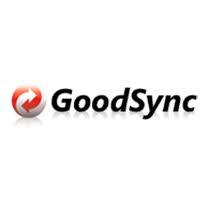What is data synchronization? This technology synchronizes data between two or more computers and/or the cloud and automatically copies changes that are transacted between devices.

File synchronization is used for home or small business backups when the user copies files to a flash drive or external hard drive. The syncing prevents creating duplicate files.
For superior syncing, take a look at GoodSync with its 30-day free trial. After which, for $30 (or use 33% of discount code “rsici”), you can continue using its battleship of features. GoodSync provides remote service and also syncs with many online services.
Now let me tell you how well GoodSync works for me. Like most, my operating system resides on my C Drive. I keep my C Drive clear and free of all data so all it has to do is operate my system and contain updates, drivers and security patches. My D Drive is the DVD/CD Rom drive and My E: drive has all my data, taking up over 75 percent of the three-terabyte internal drive. My primary data is on Drive E, and this is backed up by a cloud service and then synced to my external three-terabyte F: drive.
Now, every two hours, GoodSync automatically syncs my external F: and internal E: drives. Even though all my data is in a cloud, what if my internal drive crashes? Downloading everything would be a pain. That’s where GoodSync comes in. Plus, though the cloud has its virtues, assessing data from it on a daily basis is surely not one of them.
You’ll be pleased with GoodSync’s efficient main window. Some of GoodSync’s offerings include file filtering, bidirectional/unidirectional syncing, syncing of deletions, and job scheduling.
Version 9 can include numerous sources and single files in one job. If you create files on your mobile, GoodSync will automatically download them. It supports SkyDive, Windows Azure, Google Docs, Amazon Cloud Drive and Amazon S3.
Don’t let the lack of flamboyant design fool you; GoodSync is as good as they come, and for tech savvy users, is a breeze. In particular, not-so-tech-savvy users will be quite impressed with the many options but will need more time to catch on. Read more about that here.
GoodSync stands out from other syncing programs because it displays files from both destination and source on the right side of its main window, while the status shows on the left side. It’s best to use a dedicated destination folder for your sync.
As for connecting to online services, GoodSync supports SFTP, FTP and Webdav.
Another point is that for every PC that you wish to remotely sync, you will need a license.
There really isn’t any reason why you shouldn’t download GoodSync and take advantage of its 30-day free trial.
You have nothing to lose (literally!) with GoodSync. Get going on it.
Robert Siciliano is a digital life expert to GoodSync discussing identity theft prevention on Youtube. For Roberts FREE ebook text- SECURE Your@emailaddress -to 411247. Disclosures.
No comments:
Post a Comment